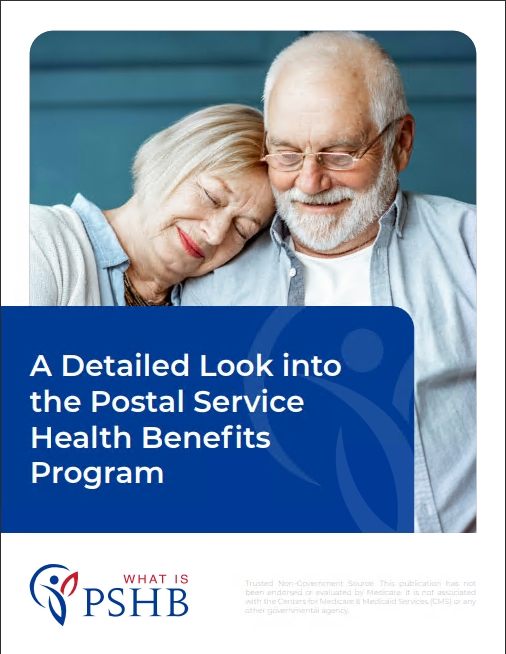Key Takeaways
-
The Postal Service Health Benefits (PSHB) program has specific enrollment rules, Medicare integration requirements, and plan options to review before Open Season begins.
-
Understanding changes in costs, benefits, and eligibility ensures you choose the right plan for 2025 and beyond.
What is the Postal Service Health Benefits Program?
The Postal Service Health Benefits (PSHB) program is a health insurance initiative specifically tailored for Postal Service employees, retirees, and their eligible family members. Replacing the Federal Employees Health Benefits (FEHB) program, PSHB is designed to address the unique needs of postal workers while maintaining high standards of healthcare coverage.
In 2025, PSHB offers a variety of plans, benefits, and integration options with Medicare, making it essential for you to understand how it works to make informed decisions during Open Season.
Key Dates and Deadlines for Open Season
Knowing the Open Season timeline is crucial for managing your health benefits effectively. The Open Season for PSHB runs from November 11 to December 13, 2025. This window is your opportunity to:
-
Enroll in a PSHB plan for the first time.
-
Switch to a different PSHB plan.
-
Adjust coverage levels for eligible family members.
If you miss this period, you can only make changes during a Qualifying Life Event (QLE), such as marriage, divorce, or the birth of a child. Any updates you make during Open Season take effect on January 1, 2026.
Who Needs to Enroll in PSHB?
All Postal Service employees and retirees, along with their eligible family members, must enroll in a PSHB plan to maintain health coverage. However, there are some exceptions:
-
If you are currently covered under a family member’s Federal Employees Health Benefits (FEHB) plan, you can continue with that coverage.
-
Retirees who are 64 or older as of January 1, 2025, may qualify for exemptions from Medicare Part B enrollment requirements.
Check your eligibility and determine whether you need to take action during Open Season to ensure uninterrupted coverage.
Medicare and PSHB: How They Work Together
If you or your dependents are eligible for Medicare, understanding its integration with PSHB is essential. Many PSHB plans coordinate with Medicare to provide comprehensive healthcare. Here’s what you should know:
Medicare Part B Requirements
If you’re a Medicare-eligible annuitant or family member, you must enroll in Medicare Part B to maintain your PSHB coverage, unless you meet specific exemption criteria. Medicare Part B offers outpatient care, doctor visits, and preventive services, which complement the benefits offered by PSHB plans.
Enhanced Benefits with Medicare
When enrolled in both PSHB and Medicare, you can often enjoy additional benefits, such as:
-
Lower out-of-pocket costs for medical services.
-
Waived deductibles for certain PSHB plans.
-
Reimbursement programs to offset Medicare Part B premiums.
Coordinating PSHB with Medicare not only broadens your coverage but also helps manage healthcare expenses more effectively.
Cost Considerations and Plan Selection
Choosing the right PSHB plan involves evaluating costs, coverage options, and your healthcare needs. Here are some factors to keep in mind:
Premiums and Deductibles
PSHB premiums and deductibles vary depending on the plan you choose. While Medicare-eligible enrollees may see cost reductions, it’s important to understand the trade-offs between lower premiums and higher out-of-pocket costs.
Out-of-Pocket Maximums
For 2025, PSHB plans include an annual out-of-pocket cap for prescription drugs under Medicare Part D. This cap is set at $2,000, providing financial relief for those with high medication costs. Review each plan’s out-of-pocket maximums to ensure they align with your budget.
Coverage for Family Members
If you’re covering dependents, evaluate plans that offer robust family coverage. Ensure your chosen plan includes essential benefits like vision, dental, and hearing, which are often valuable for families.
Pharmacy Benefits and Prescription Coverage
PSHB plans automatically include prescription drug coverage through Medicare Part D Employer Group Waiver Plans (EGWP) for Medicare-eligible enrollees. These plans are designed to:
-
Provide access to a wide network of pharmacies.
-
Cover both generic and brand-name medications.
-
Allow predictable costs for routine prescriptions.
Check your plan’s formulary (the list of covered drugs) to confirm your medications are included. If your prescription needs change, Open Season is the time to switch to a plan that better suits your requirements.
What Happens if You Don’t Act During Open Season?
Failing to enroll or update your PSHB plan during Open Season can lead to complications, including:
-
Losing eligibility for PSHB coverage.
-
Higher out-of-pocket expenses if your current plan no longer meets your needs.
-
Delayed benefits changes, requiring you to wait until the next Open Season or a Qualifying Life Event.
Proactively reviewing your options ensures you avoid these pitfalls and maintain the coverage you need.
Preparing for Open Season: A Checklist
Stay organized with this step-by-step guide to prepare for Open Season:
-
Review Your Current Coverage: Analyze your current plan’s costs, benefits, and limitations.
-
Check Eligibility Requirements: Ensure you meet all criteria for enrollment, especially for Medicare Part B integration.
-
Compare Plan Options: Use available resources to evaluate PSHB plans side by side.
-
Consider Healthcare Needs: Factor in your medical history, prescription requirements, and family health needs.
-
Make Updates: Submit your enrollment or plan changes during Open Season.
Staying Informed: Annual Notices and Updates
Before Open Season begins, you’ll receive an Annual Notice of Change (ANOC). This document outlines any modifications to your current plan, including:
-
Changes in premiums or deductibles.
-
Adjustments to benefits or coverage levels.
-
Updates to network providers or pharmacy coverage.
Reviewing the ANOC ensures you’re aware of any changes that might impact your healthcare choices for 2025.
Making the Most of Your PSHB Benefits
To maximize the value of your PSHB coverage, consider these tips:
-
Coordinate Care: Take advantage of Medicare integration for enhanced benefits and reduced costs.
-
Use Preventive Services: Many PSHB plans cover preventive care at no additional cost.
-
Leverage Wellness Programs: Explore plan-specific perks like fitness memberships or health coaching.
-
Keep Track of Deadlines: Missing important dates can result in gaps in coverage or missed opportunities for savings.
Why Planning Ahead Matters
Taking the time to review and update your PSHB plan during Open Season isn’t just about compliance—it’s about securing peace of mind. With the right plan, you can:
-
Ensure comprehensive coverage for you and your family.
-
Manage healthcare expenses more effectively.
-
Access the medical services you need without unnecessary stress.
Preparing for 2026 and Beyond
As the healthcare landscape evolves, staying proactive about your benefits ensures you’re always covered. Use each Open Season as an opportunity to reassess your healthcare needs and make adjustments that align with your life circumstances.
Your Health, Your Choice
By understanding the Postal Service Health Benefits program, you’re empowered to make informed decisions about your coverage. Take the time to explore your options, evaluate your needs, and choose a plan that supports your health and well-being in 2025 and beyond.










